Abstract
The blue-green alga, Anacystis nidulans, was grown in lights of different colors and intensities, and its absorption and fluorescence properties were studied. Strong orange light, absorbed mainly by phycocyanin, causes reduction in the ratio of phycocyanin to chlorophyll a; strong red light, absorbed mainly by chlorophyll, causes an increase in this ratio. This confirms the earlier findings of Brody and Emerson (12) on Porphyridum, and of Jones and Myers (8) on Anacystis. Anacystis cultures grown in light of low intensity show, upon excitation of phycocyanin, emission peaks at 600 mμ and 680 mμ, due to the fluorescence of phycocyanin and chlorophyll a, respectively. Changes in the efficiency of energy transfer from phycocyanin to chlorophyll a are revealed by changes in the ratios of these two bands. A decrease in efficiency of energy transfer from phycocyanin to chlorophyll a seems to occur whenever the ratio of chlorophyll a to phycocyanin deviates from the normal. Algae grown in light of high intensity show, upon excitation of phycocyanin, only a fluorescence band at 660 mμ and no band at 680 mμ. This suggests reduced efficiency of energy transfer from phycocyanin to the strongly fluorescent form of chlorophyll a (chlorophyll a2) and perhaps increased transfer to the weakly fluorescent form of chlorophyll a (chlorophyll a1).
Full text
PDF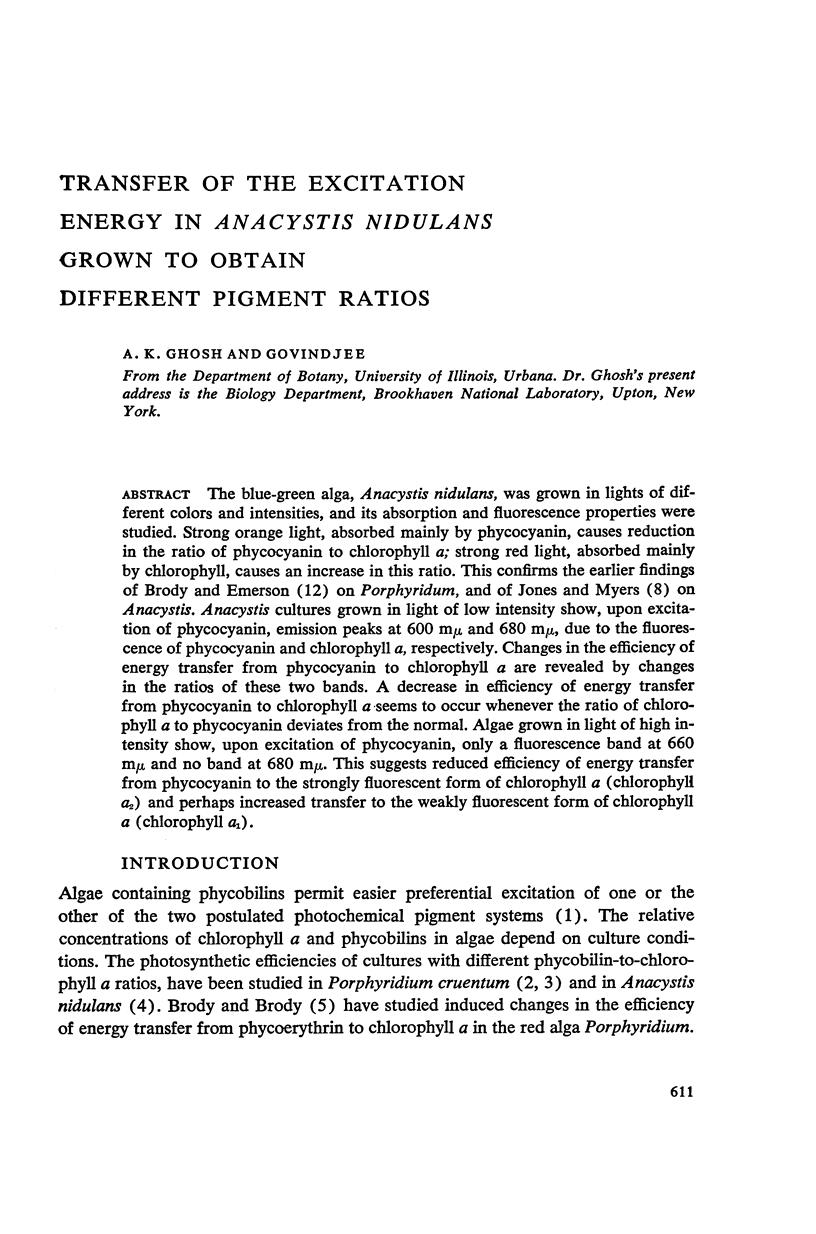
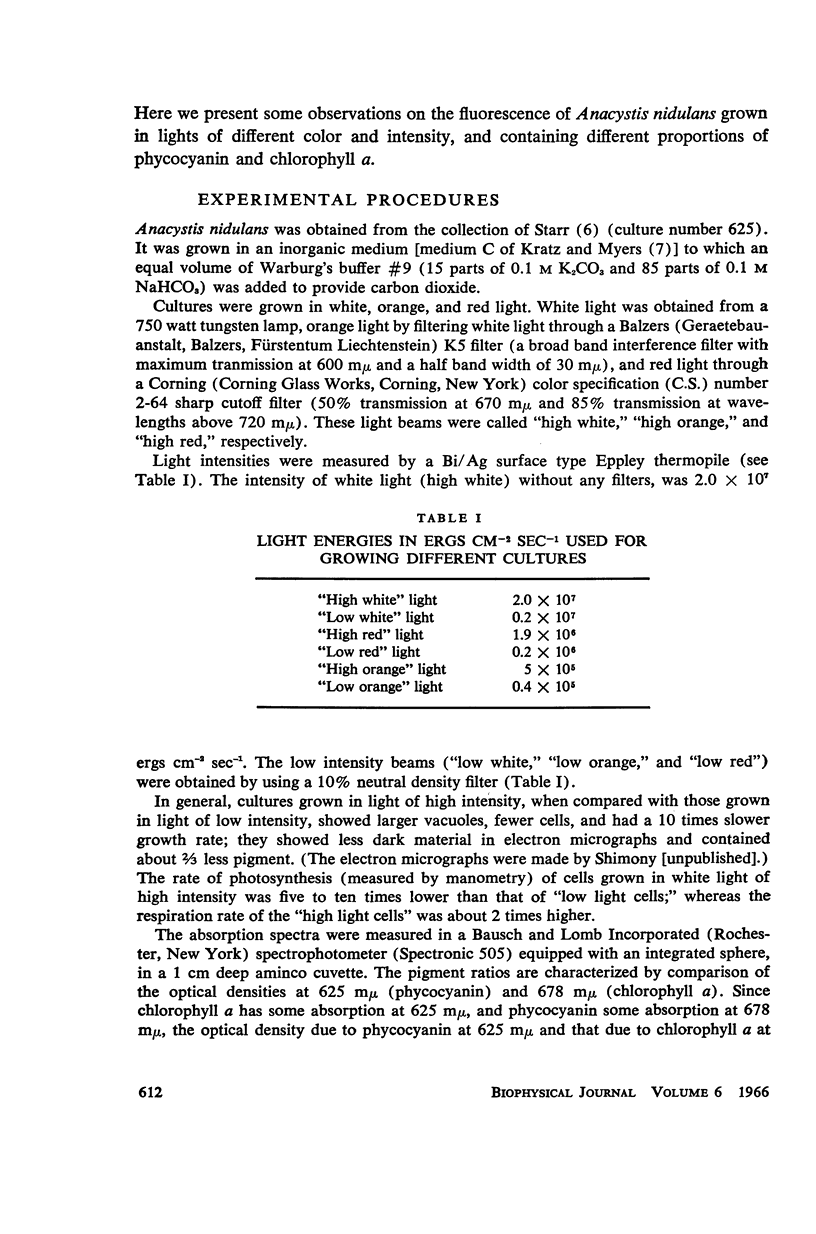
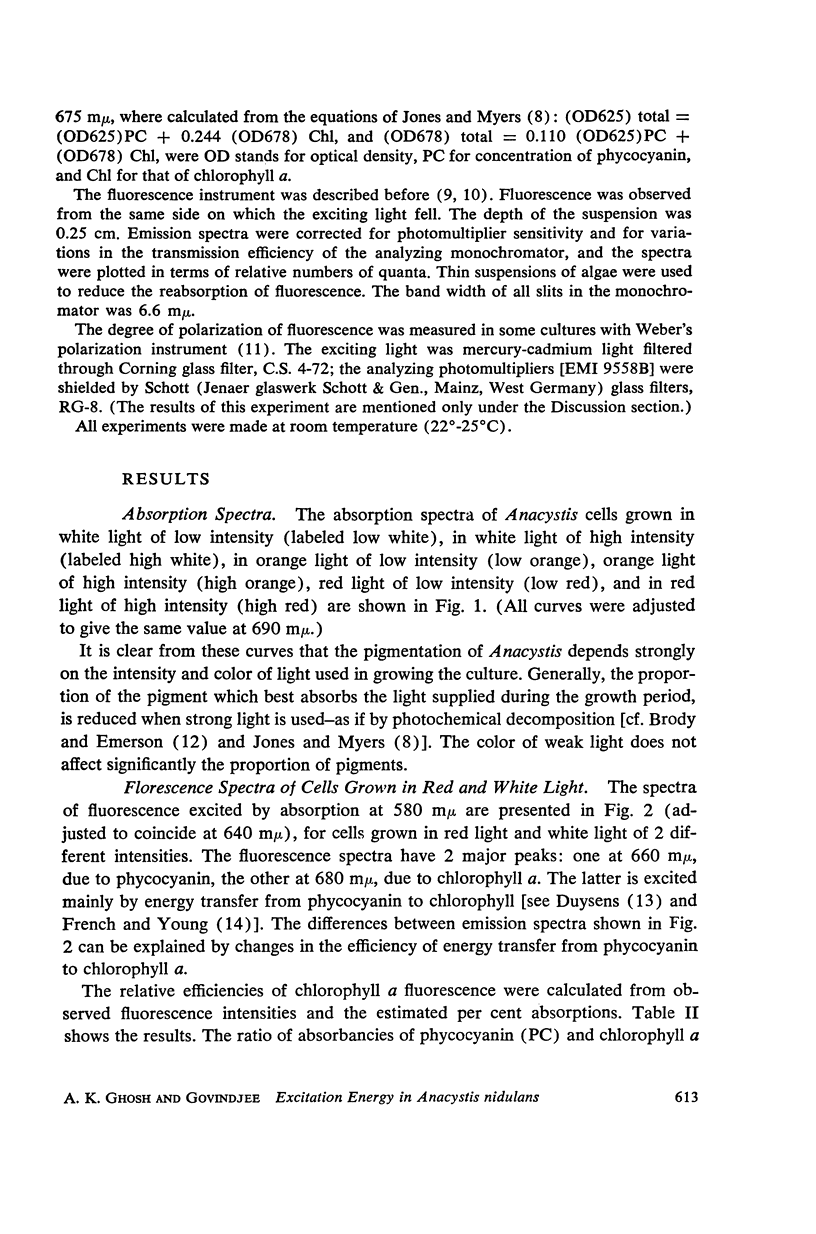
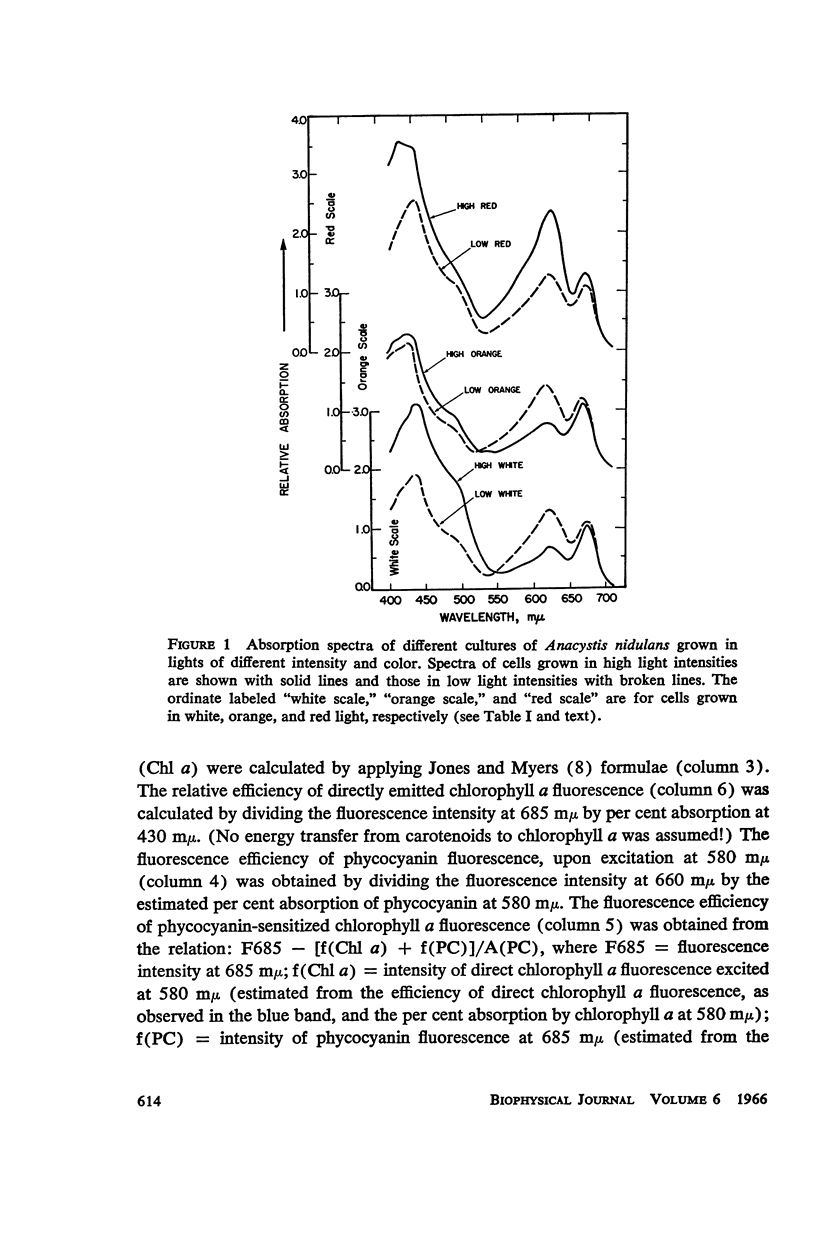
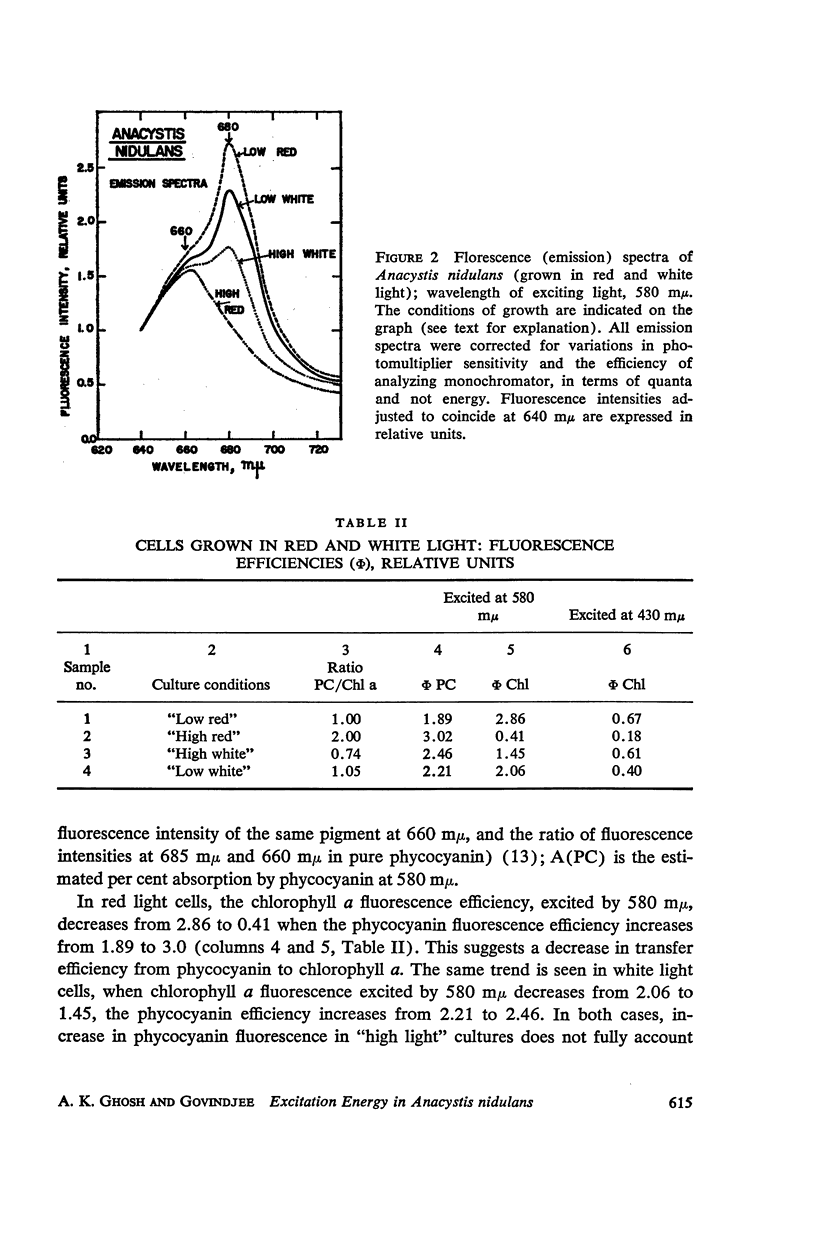
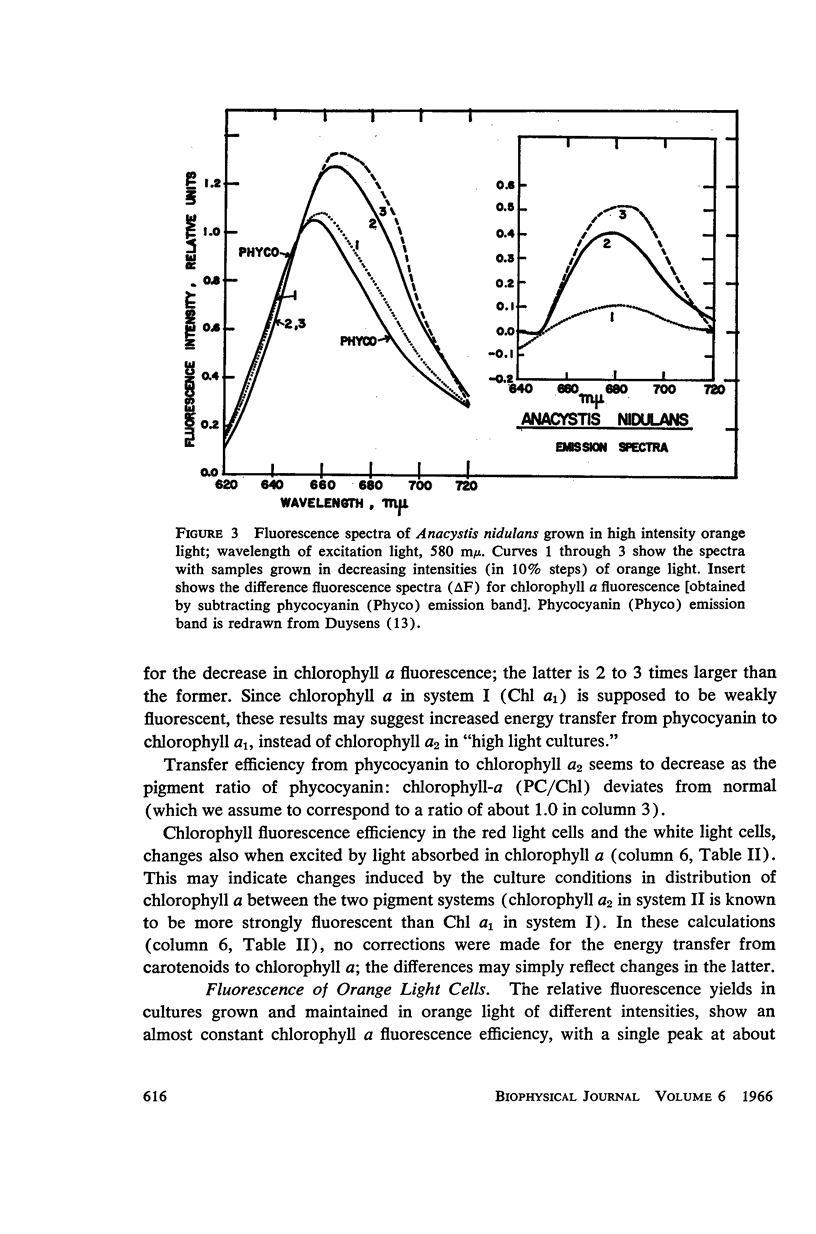
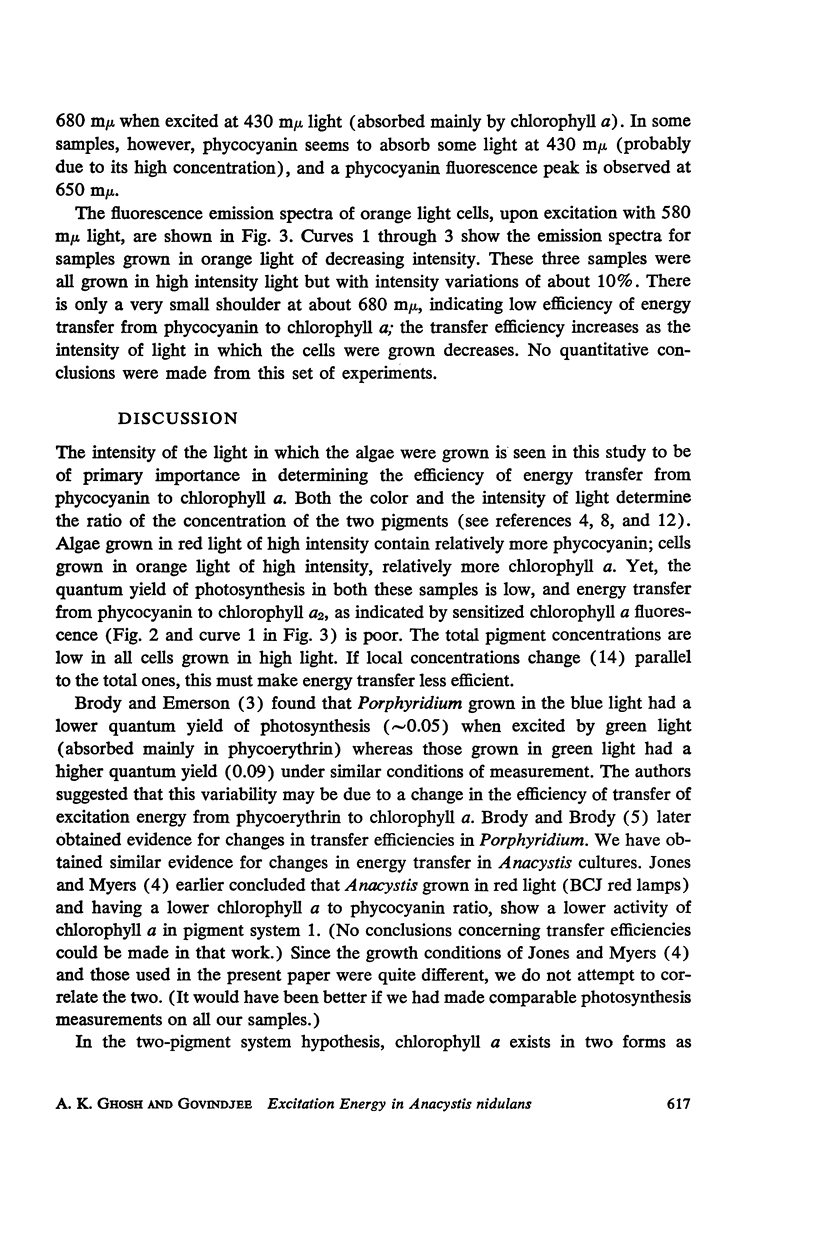
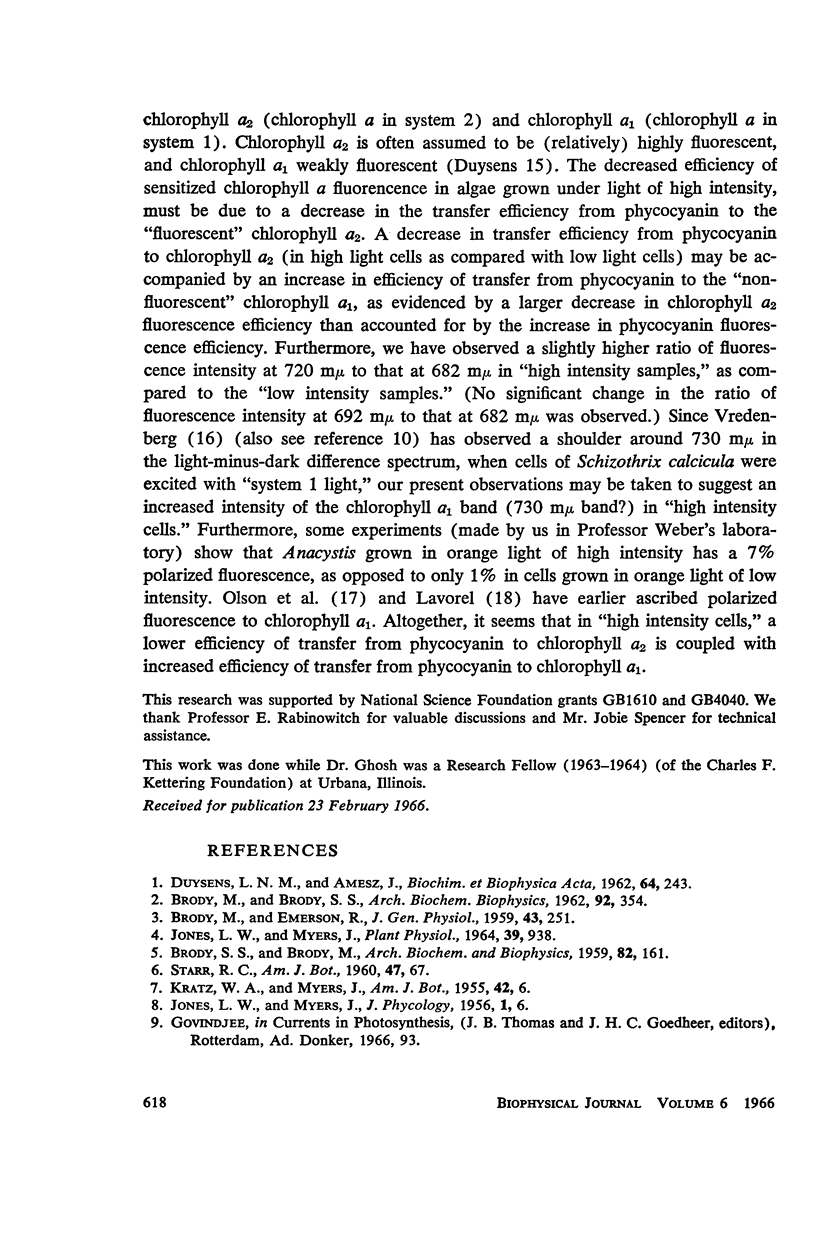
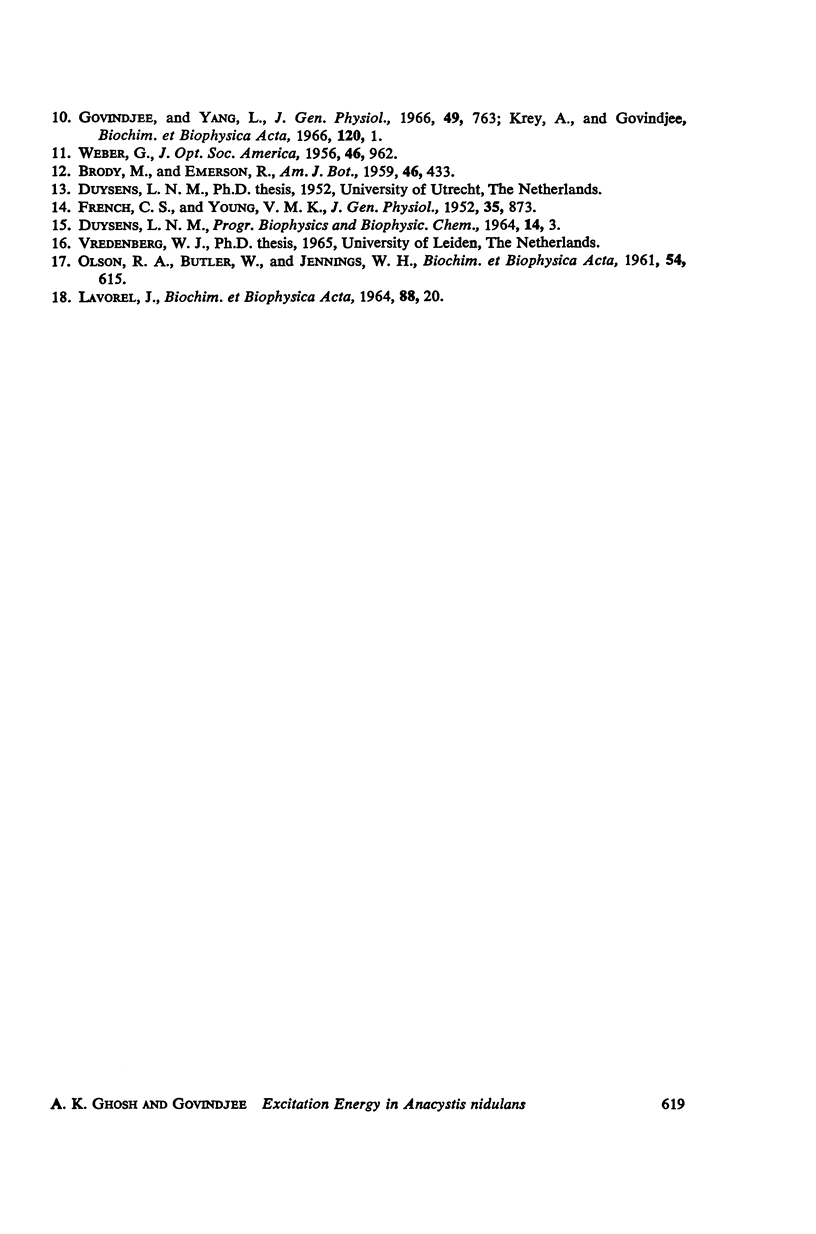
Selected References
These references are in PubMed. This may not be the complete list of references from this article.
- BRODY M., EMERSON R. The quantum yield of photosynthesis in Porphyridium cruentum, and the role of chlorophyll a in the photosynthesis of red algae. J Gen Physiol. 1959 Nov;43:251–264. doi: 10.1085/jgp.43.2.251. [DOI] [PMC free article] [PubMed] [Google Scholar]
- FRENCH C. S., YOUNG V. K. The fluorescence spectra of red algae and the transfer of energy from phycoerythrin to phycocyanin and chlorophyll. J Gen Physiol. 1952 Jul;35(6):873–890. doi: 10.1085/jgp.35.6.873. [DOI] [PMC free article] [PubMed] [Google Scholar]
- Govindjee, Yang L. Structure of the red fluorescence band in chloroplasts. J Gen Physiol. 1966 Mar;49(4):763–780. doi: 10.1085/jgp.49.4.763. [DOI] [PMC free article] [PubMed] [Google Scholar]
- Jones L. W., Myers J. Enhancement in the Blue-Green Alga, Anacystis nidulans. Plant Physiol. 1964 Nov;39(6):938–946. doi: 10.1104/pp.39.6.938. [DOI] [PMC free article] [PubMed] [Google Scholar]
- LAVOREL J. H'ETEROG'EN'EIT'E DE LA CHLOROPHYLLE IN VIVO. II. POLARISATION ET SPECTRES D'ACTION DE FLUORESCENCE. Biochim Biophys Acta. 1964 Jul 29;88:20–36. [PubMed] [Google Scholar]
- OLSON R. A., BUTLER W. L., JENNINGS W. H. The orientation of chlorophyll molecules in vivo: evidence from polarized fluorescence. Biochim Biophys Acta. 1961 Dec 23;54:615–617. doi: 10.1016/0006-3002(61)90115-9. [DOI] [PubMed] [Google Scholar]


